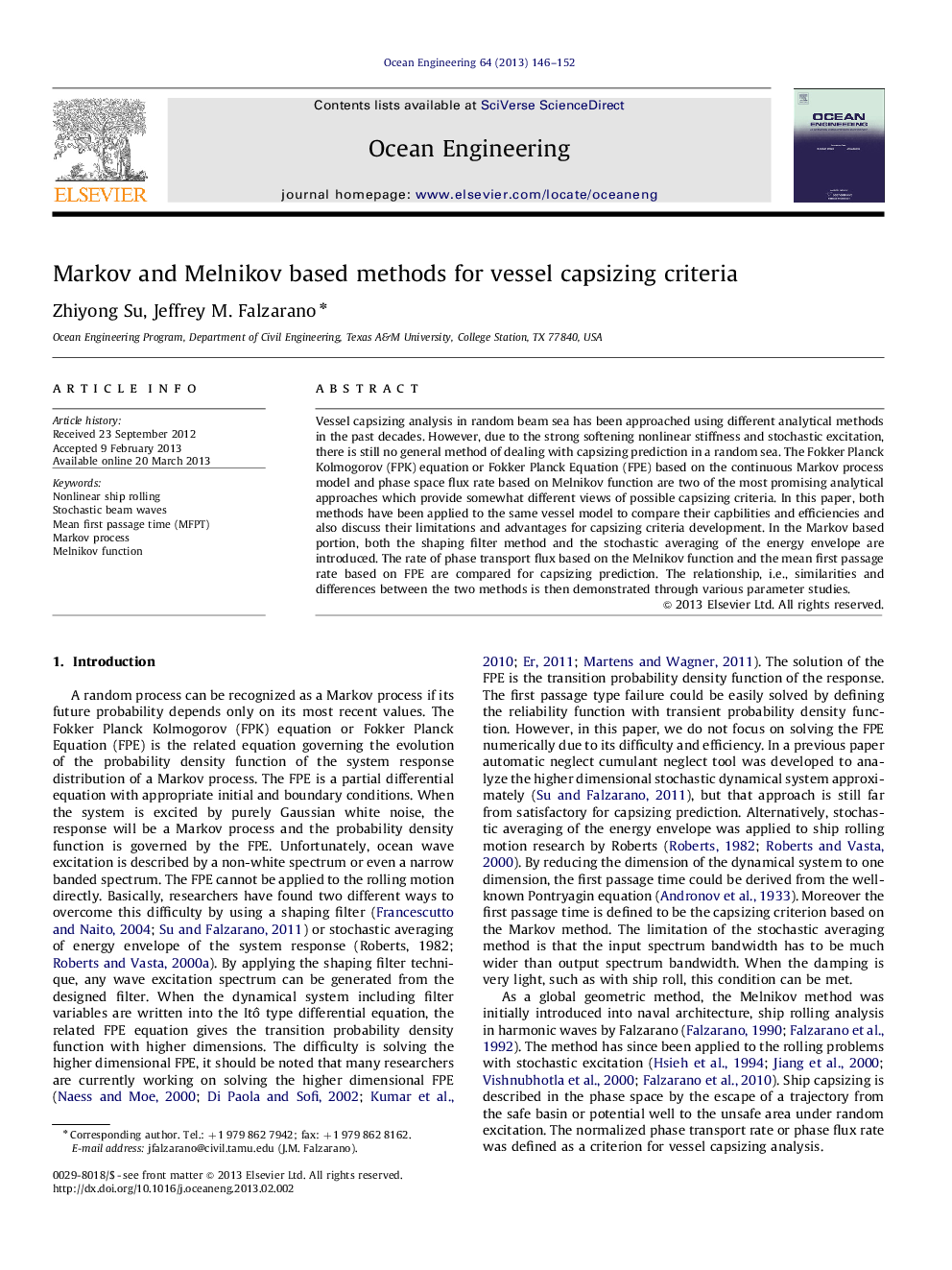| Article ID | Journal | Published Year | Pages | File Type |
|---|---|---|---|---|
| 1725948 | Ocean Engineering | 2013 | 7 Pages |
Vessel capsizing analysis in random beam sea has been approached using different analytical methods in the past decades. However, due to the strong softening nonlinear stiffness and stochastic excitation, there is still no general method of dealing with capsizing prediction in a random sea. The Fokker Planck Kolmogorov (FPK) equation or Fokker Planck Equation (FPE) based on the continuous Markov process model and phase space flux rate based on Melnikov function are two of the most promising analytical approaches which provide somewhat different views of possible capsizing criteria. In this paper, both methods have been applied to the same vessel model to compare their capbilities and efficiencies and also discuss their limitations and advantages for capsizing criteria development. In the Markov based portion, both the shaping filter method and the stochastic averaging of the energy envelope are introduced. The rate of phase transport flux based on the Melnikov function and the mean first passage rate based on FPE are compared for capsizing prediction. The relationship, i.e., similarities and differences between the two methods is then demonstrated through various parameter studies.
► Both Markov and Melnikov methods are applied to a specific vessel. ► Phase space transport rate and mean escape rate are compared with various coefficients. ► Different methods are introduced for future dynamical capsizing criteria definition.
